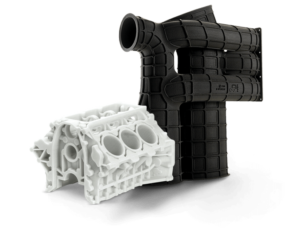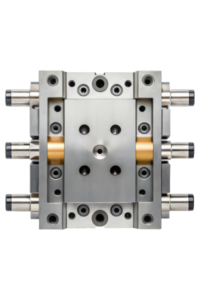How 3D Printing Stacks Up Against Traditional Manufacturing
If you’re updated with the latest in prototyping and manufacturing, then you must have heard about 3D printing. The question is – how does 3D printing stack up against traditional manufacturing? Is it only a trend, or is it revolutionizing how you manufacture or create products? In this blog, we’ll explore this question and examine the advantages of 3D printing over traditional manufacturing methods..
Is 3D printing more cost-effective than traditional manufacturing?
One key advantage of 3D printing is its cost-effectiveness. Unlike conventional manufacturing methods, which often require expensive molds, large-scale production runs, and tooling, 3D printing reduces these upfront expenses.
In contrast, 3D printing allows for rapid prototyping without hefty expenses. According to studies, prototyping is the most practical application of 3D printing, with many organizations using it to test and validate designs before going into full-scale production. This helped drive the entire 3D printing market of the United States to reach US$ 5.5 Billion in 2023.
Does 3D printing offer greater design flexibility?
Absolutely, conventional manufacturing methods can impose remarkable design constraints. When utilizing injection molding, for example, specific complex shapes and geometries can be impossible to achieve due to the limitations in mold making. In this regard, Quickparts’3D printing support to Custom Car Builder is worth mentioning. Their customer wanted to redesign the windshield with a lower and sleeker profile than the original, while maintaining its design aesthetics. Quickparts provided closed-circuit validation and 3D printing services to help achieve the desired look and finish. (Read the complete case study. Click here).
Is 3D printing faster than traditional manufacturing?
Speed is another potential benefit of 3D printing. Traditional manufacturing usually includes multiple stages, such as tooling, finishing, and assembly, that can take weeks or months to complete. The wait time for a single prototype to be created and tested can remarkably delay projects.
With 3D printing, this process is accelerated. A prototype can be designed, tested and printed within hours, days or weeks. This rapid turnaround time is significantly valuable for industries that need quick iterations and testing, for example product development, medical prosthetics and automotive engineering.
Is 3D printing more sustainable than traditional methods?
Recent surveys have shown that many US companies are adopting sustainable procedures. It is estimated that more than 50% of manufacturers are implementing corporate-wide and extensive sustainability strategies. Furthermore, 3D printing allows for localized production, eliminating extensive logistics and transportation requirements. This not only cuts costs but also lowers carbon emissions. With the elevation of recyclable as well as biodegradable printing materials, 3D printing is now becoming a more environmentally friendly alternative to traditional methods.
Can 3D printing compete with traditional manufacturing in large-scale production?
While 3D printing excels in customization, prototyping, and low-volume production, traditional manufacturing still benefits from mass production. Methods like injection molding are more cost-effective for producing thousands or millions of identical parts at extreme speeds.
However, advancements in 3D printing technologies are closing this gap. Industrial-grade 3D printers can now produce high-quality parts faster, and many companies are adopting hybrid approaches—using 3D printing for prototyping and customization, while utilizing conventional manufacturing for huge production.
Is 3D printing winning?
Hence, the question remains—is 3D printing truly winning over traditional manufacturing processes? The answer depends on the application. For customization, sustainable production, cost-effectiveness, and rapid prototyping, 3D printing is undeniably a game-changer. It allows innovation, accelerates product development, and reduces waste.
While conventional manufacturing still holds an advantage for large-scale production, the rapid advancement in 3D printing technologies makes it a formidable competitor. As organizations continue to embrace digital manufacturing, 3D printing is aiming to play a major role in future production.
FAQs
- How does the strength of 3D printing compare to traditional manufacturing methods
It is dependent upon the process and material employed. Although stronger components are frequently produced by traditional manufacturing methods like CNC machining and injection molding, advances in 3D printing materials like metals and carbon-fiber-infused filaments are narrowing the strength difference.
- Can 3D printing be used for mass production?
Although 3D printing is primarily used for low-volume production and prototyping, emerging technologies are making it more practical for large-scale manufacturing. However, because of their speed and affordability, traditional processes are still preferred for large-scale production.
- What industries benefit the most from 3D printing?
The rapid prototyping capabilities, customization options, and cost advantages of 3D printing make it a valuable tool for industries like consumer products, healthcare, automotive, aerospace, and more.
- How does 3D printing reduce waste?
3D printing reduces waste and encourages sustainability by building parts layer by layer, using only the material required, as opposed to traditional subtractive manufacturing processes that remove superfluous material.
If you’re looking for top-quality 3D printing services for your next project, Quickparts offers advanced manufacturing solutions to bring your designs to life efficiently and affordably. Contact us today to explore the possibilities of 3D printing!
Reference:
https://www.sciencedirect.com/science/article/pii/S0959652624032414


